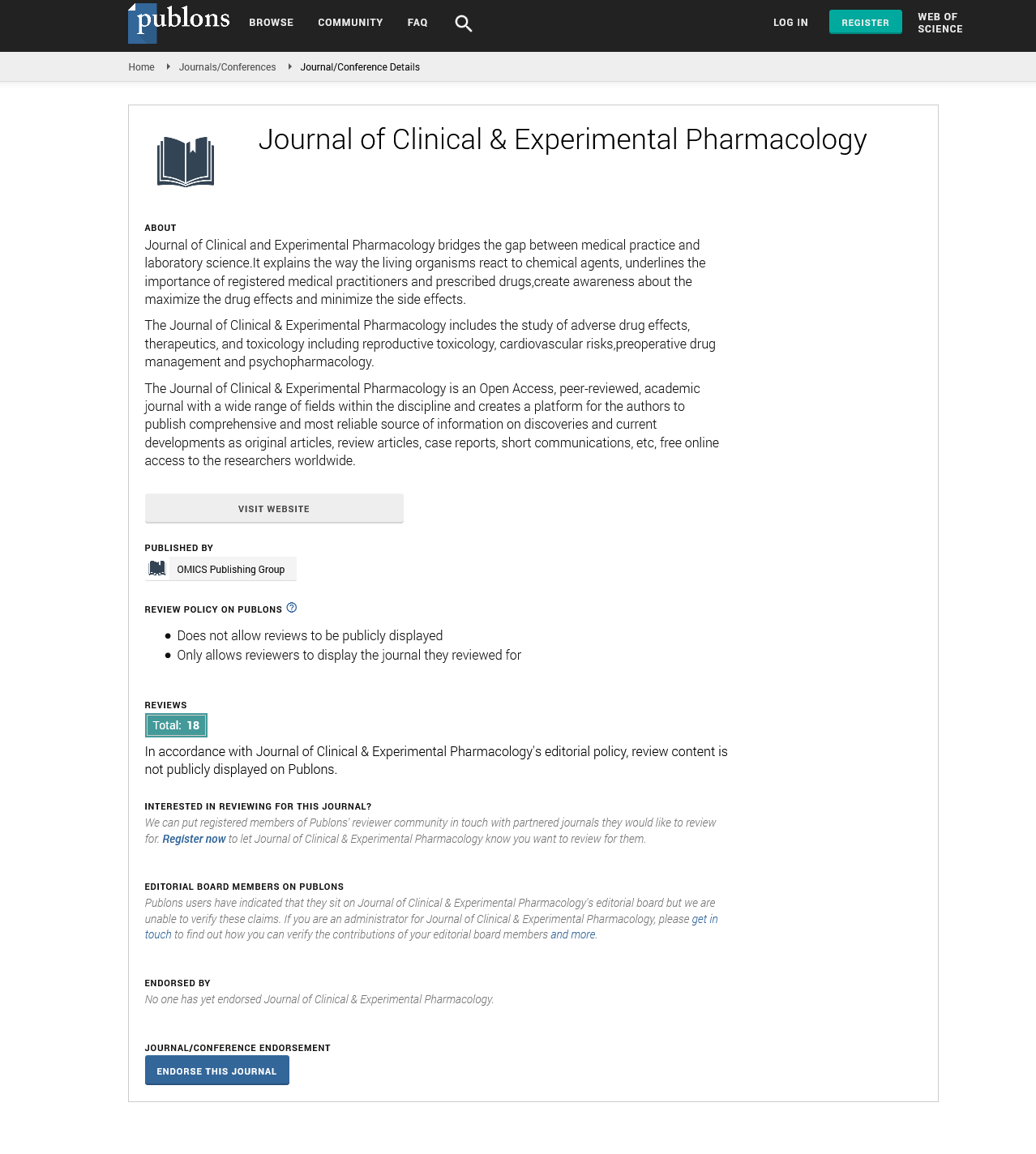Indexed In
- Open J Gate
- Genamics JournalSeek
- China National Knowledge Infrastructure (CNKI)
- Ulrich's Periodicals Directory
- RefSeek
- Hamdard University
- EBSCO A-Z
- OCLC- WorldCat
- Publons
- Google Scholar
Useful Links
Share This Page
Journal Flyer

Open Access Journals
- Agri and Aquaculture
- Biochemistry
- Bioinformatics & Systems Biology
- Business & Management
- Chemistry
- Clinical Sciences
- Engineering
- Food & Nutrition
- General Science
- Genetics & Molecular Biology
- Immunology & Microbiology
- Medical Sciences
- Neuroscience & Psychology
- Nursing & Health Care
- Pharmaceutical Sciences
Medicinal plants used in the Ejisu-Juaben municipality, Southern Ghana: An ethnobotanical study
5th International Conference and Exhibition on Pharmacology and Ethnopharmacology
March 23-25, 2017 Orlando, USA
Appiah Kwame Sarpong
Tokyo University of Agriculture and Technology, Japan
Posters & Accepted Abstracts: Clin Exp Pharmacol
Abstract:
Ethnopharmacological Relevance: Most communities have distinct knowledge on the use of medicinal plants against various ailments. Notwithstanding, this knowledge risks extinction, due to verbal transmission to next generation as pertaining in the Ejisu- Juaben municipality. Aim: The aim of this study was to explore and document the use of medicinal plants for the treatment of human diseases in the Ejisu- Juaben Municipality. Materials & Methods: Ethnomedicinal information was collected in 2016 (January-September) from 140 informants (men: women=50:90) in 20 communities in the Ejisu-Juaben municipality by using semi-structured interviews. Informant consensus factor (ICF), Fidelity Level (FL), and Use Value (UV) were used to analyze the relevance of information provided by informants. Results: A total of 106 plant species belonging to 96 genera and 45 families; mostly represented by Fabaceae, Euphorbiaceae and Asteraceae (11%, 8% and 6% respectively) were reported for the treatment of 68 human ailments. Leaves (52%) were the most frequently used plant parts. Cleistopholis patens, was the most frequently used species by the local informants (UV of 0.54). The disease categories with the highest ICF were values for pains & fevers and dermatological infections categories (0.88 and 0.85, respectively). Tectona grandis and Azadirachta indica both used to treat malaria had 100% FL. Conclusion: The reported high degree of consensus among the informants indicates that the current knowledge and uses of medicinal plants are still high in the Ejisu-Juaben municipality. Conservation techniques for the most preferred and useful species should be developed and disseminated among the medicinal plant users in the municipality.
Biography :
Email: s166196z@st.go.tuat.ac.jp

